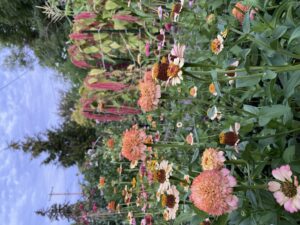 As summer quickly slips away, fall is a time when gardener grief sets in. It is a time when many of the steadfast summer bloomers start to drop their last petals. Farewell to the sweet peas, snapdragons; overcome with rust. The crocosmia seed pods have browned and the calla lilies have finished their show. It is a time when the aphids settle in and powdery mildew takes over the underwatered lupines and the fading cosmos, dense with fine leaves slowly turning silver.
As summer quickly slips away, fall is a time when gardener grief sets in. It is a time when many of the steadfast summer bloomers start to drop their last petals. Farewell to the sweet peas, snapdragons; overcome with rust. The crocosmia seed pods have browned and the calla lilies have finished their show. It is a time when the aphids settle in and powdery mildew takes over the underwatered lupines and the fading cosmos, dense with fine leaves slowly turning silver.
It is a time of immense gratitude for the endless joy the blooms have brought. It is a time for reflection; what worked, how could the labor of spring have been lighter or more fruitful? Or, perhaps it was just right and these weeks and weeks of armfuls of blooms were just the right amount.
This is the time to save seeds for next year. Pluck the seeds from the zinnia heads and shake them from the cress, amaranth and celosia. Let the strawflowers open, remove the fluff and collect the tiny seeds; save the heads of the scabiosa and the brown pods of the sweet peas. Your spring self will thank you.
The work is slow in fall; clear a bed here and there or an early morning accidental clearing of a long-neglected blackberry patch or grabbing the last of the arugula before the slugs return. It’s a little cover crop planting and some hardy annual direct sowing. Fingers crossed that the rains don’t come and wash them away before their little foxglove, calendula, sweet pea, poppy and kale roots take hold. I cover them with frost cloth until they sprout or they usually become a buffet for the migrating birds.
It is a time of farewell to a season that never lasts as long as one hopes. Grateful for the dahlias that will provide an abundance of blooms until the first frost. The cut and comes are bursting with buds ready for one last flush of color, zinnias, marigolds, and cosmos keep on giving until the frost takes them. While this is a season of endings it is also the beginning of hard, late fall work. Ease into that.
Ways to love your garden in fall: 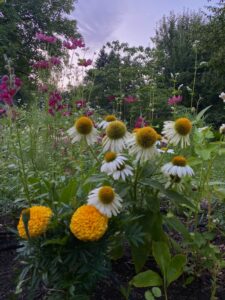
- Deadhead the cut and come flowers, they will give you joy for many more weeks.
- Clear the plants that have shed their last petal, cut back the summer bulb foliage now brown or fading.
- Prep your beds for winter cover crops: winter rye, winter peas, oats and buckwheat do well in zone 8 and are easy to turn into the soil come spring.
- Roll and store trellises, drip line and soaker hoses.
- Prep beds for fall planted bulbs, narcissus, tulips, alliums.
- Prep beds for ranunculus, they will be delivered soon and need soaking and planting and a blanket of frost cloth is helpful for our winters.
- Plant winter hardy annuals flowers and veggies.
- Once first frost arrives, it will be time to dig the dahlias, wash them, sort them and store them for winter to share in the spring.
- Most importantly, savor every last moment of sun on your face and blooms in your arms!
Happy gardening, tell your plants they’re great, always be planting, and enjoy the view!
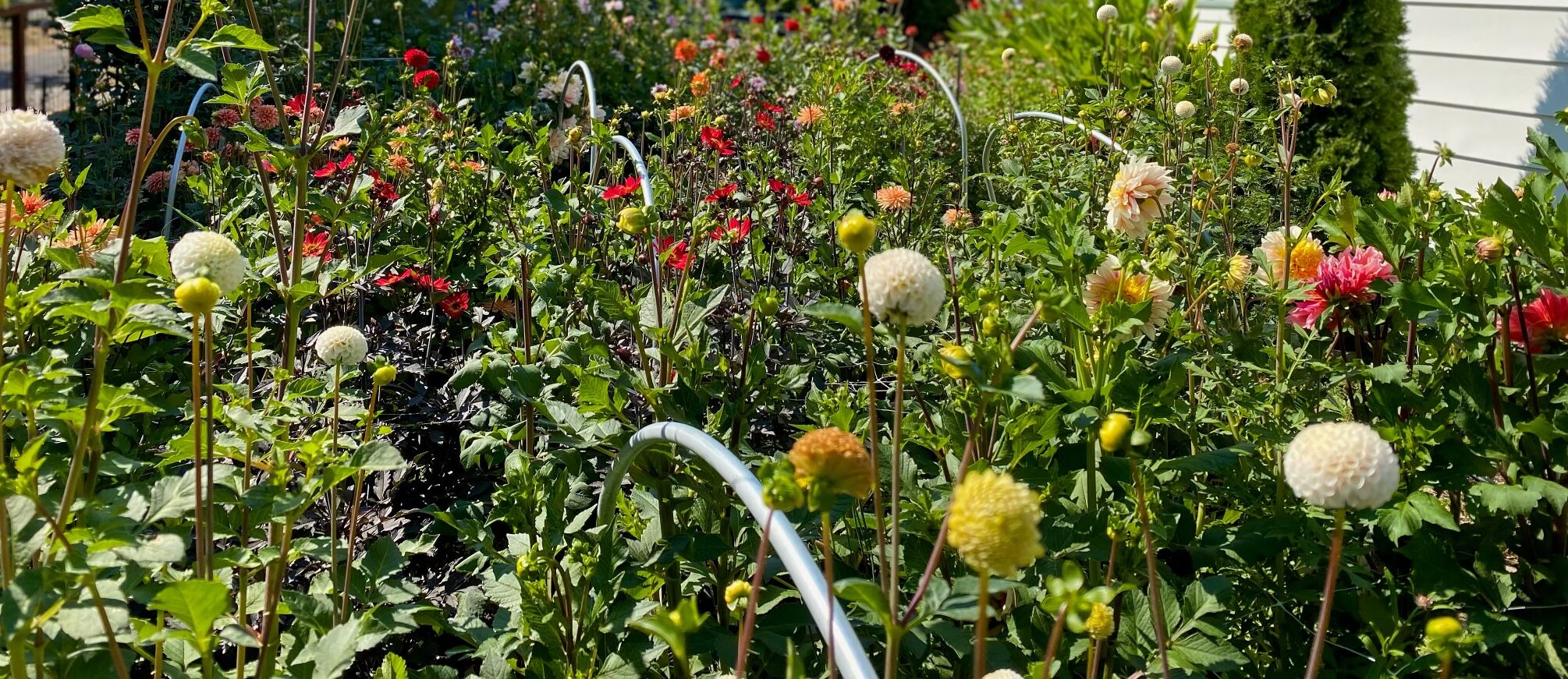
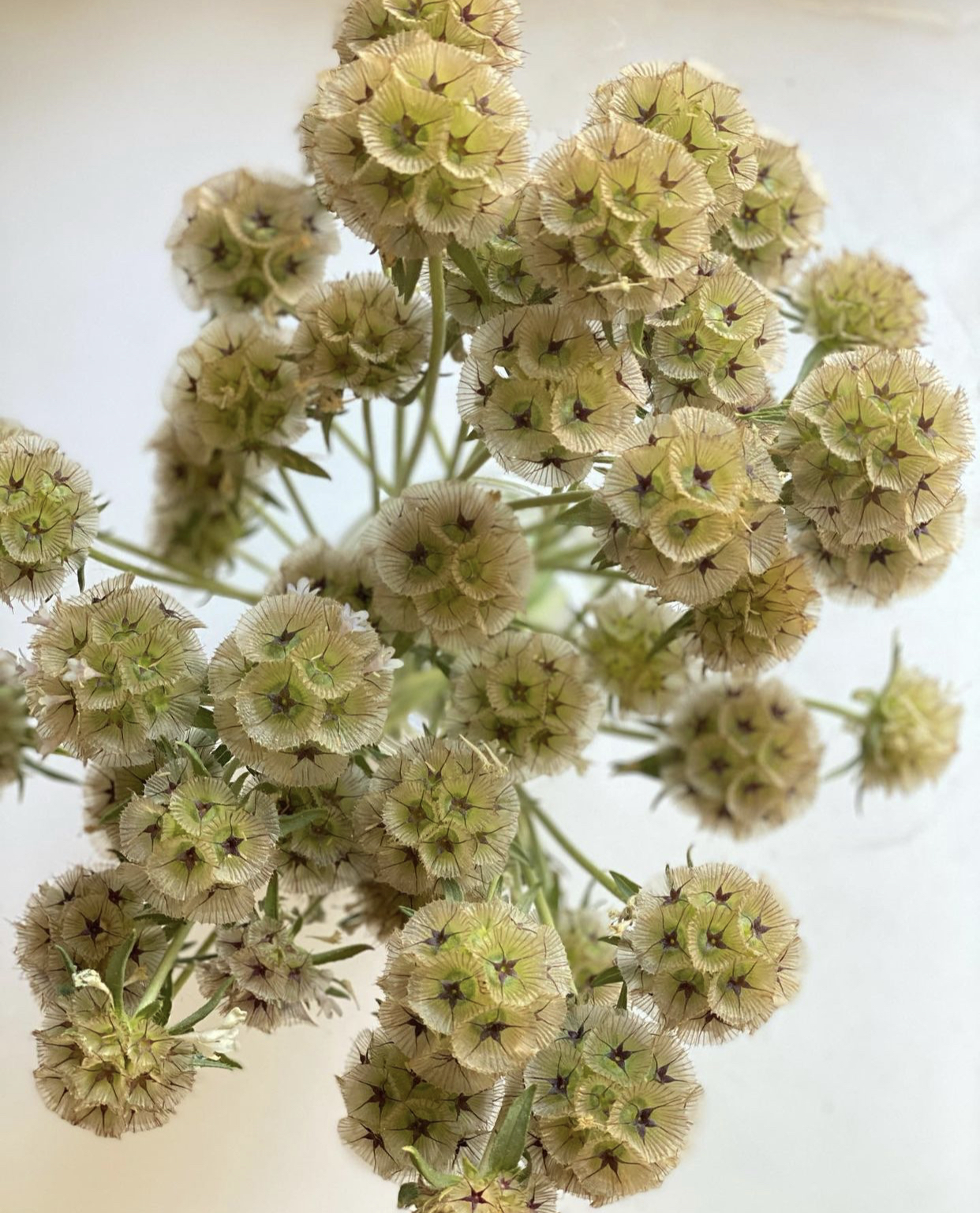
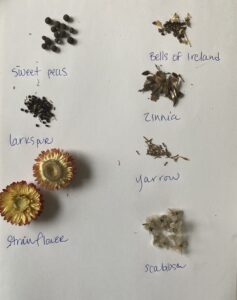
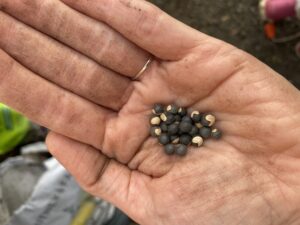 I harvested thousands of seeds this year with the hopes of an abundance of viable spring seedlings to share. One of my most favorite seeds (shown in the header) are from the pincushion flower, scabiosa. I am also a big fan of these sweet little seeds from Love in a Puff….nevermind those dirty gardener hands!
I harvested thousands of seeds this year with the hopes of an abundance of viable spring seedlings to share. One of my most favorite seeds (shown in the header) are from the pincushion flower, scabiosa. I am also a big fan of these sweet little seeds from Love in a Puff….nevermind those dirty gardener hands!